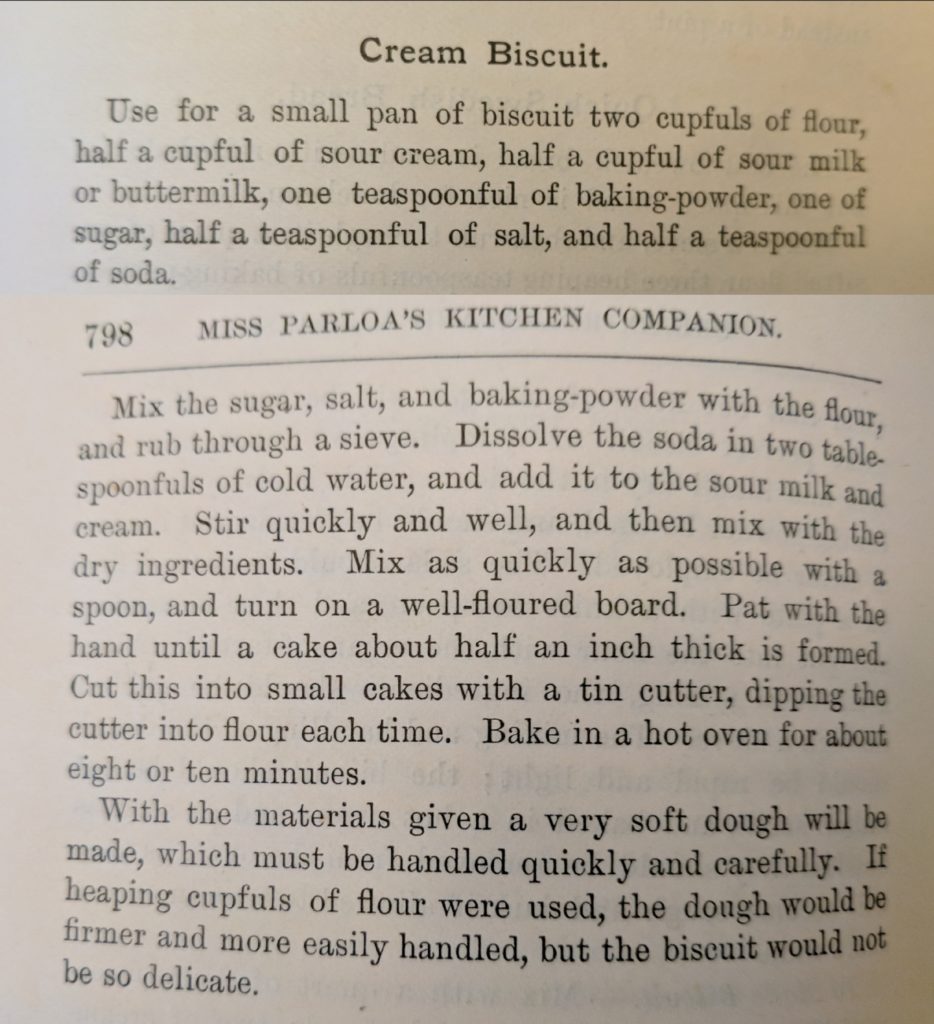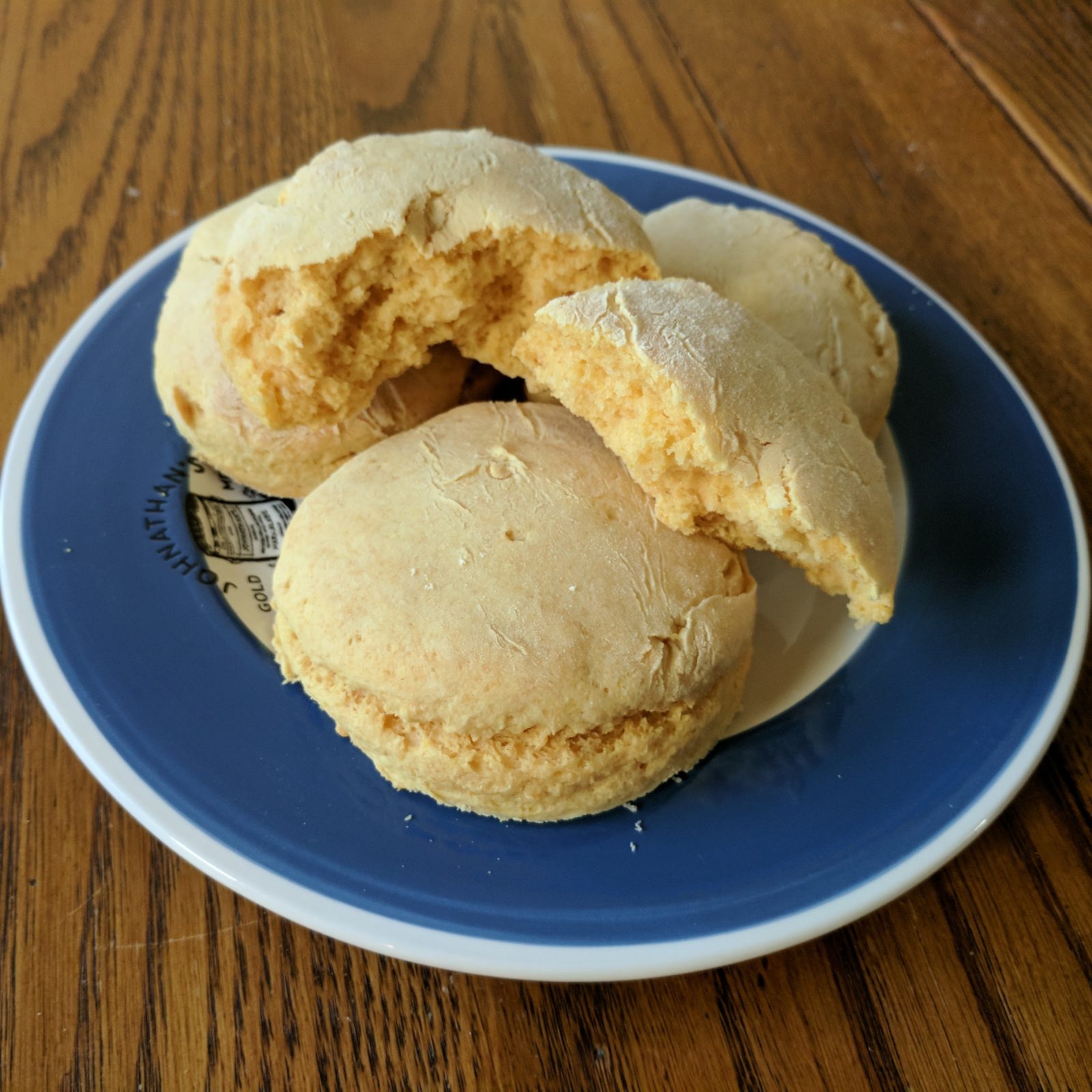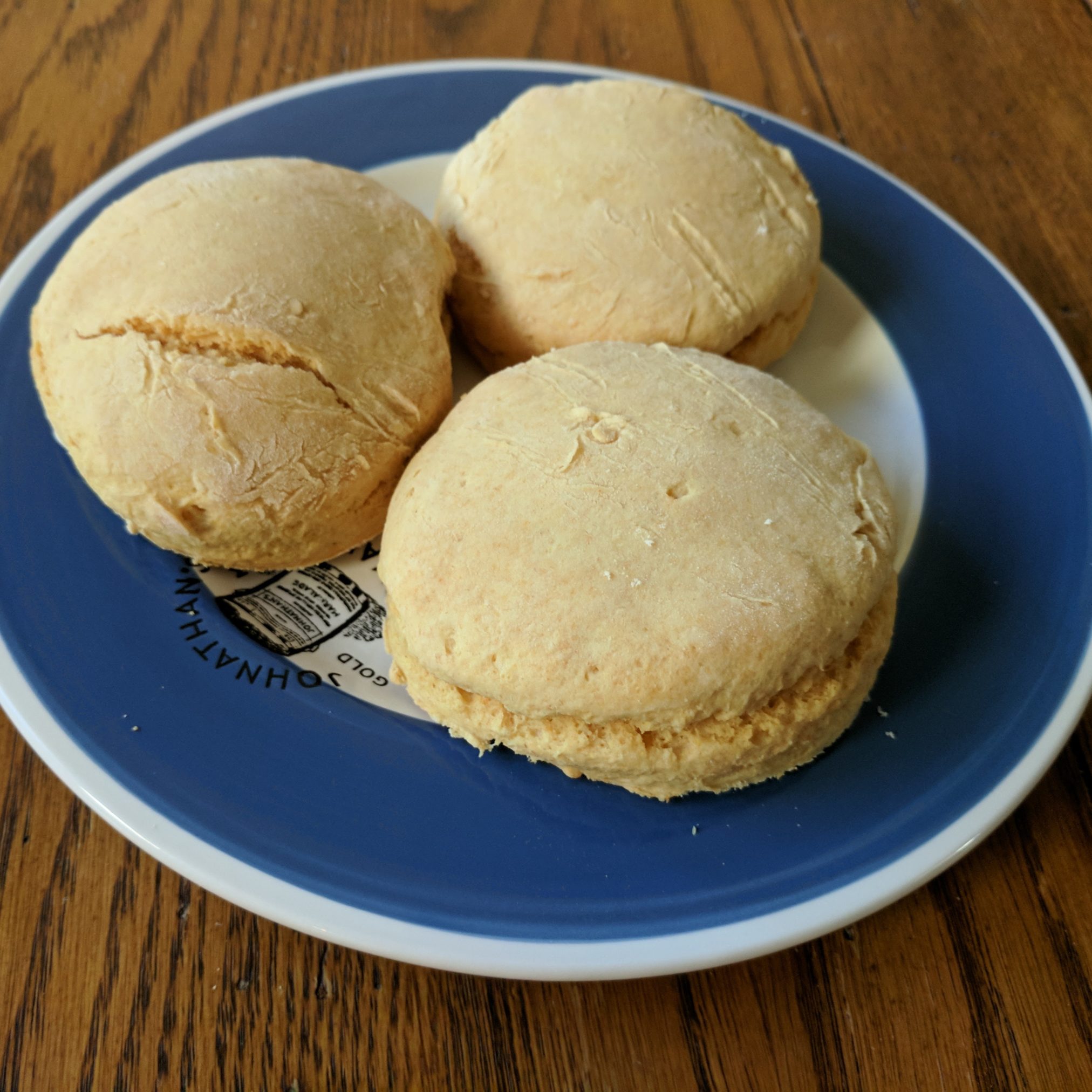Biscuit can be a troublesome term in historic cooking. In England, biscuit more commonly refers to what Americans would call cookies or crackers. And into the 19th century, the English term was still commonly used in American books. But even when it is used for the more modern American style biscuit, they were still quite different. Two types were common, yeast bread biscuits, and baking soda/powder biscuits. Yeast biscuits today would more likely be called pull-apart rolls. It was pretty much straight up bread dough, formed into balls and placed closely in a pan to bake.
Baking soda or baking powder biscuits were similar to today’s biscuits, but not quite the same. The amount of shortening, and how it was added was very different. Modern biscuits use quite a bit of shortening, cut or rubbed into the flour before adding the liquid. 19th century soda biscuits used only a very small amount of shortening, which was generally melted in with the liquid before adding to the dry ingredients. This results in a more cake-like biscuit, instead of the layered flaky biscuits of today.
This particular recipe comes from Miss Parloa’s Kitchen Companion[1], and uses sour cream as both liquid and the fat. It produced a very light, very cake-like biscuit. It crumbled fairly easily, but was extremely tender and tasty. I also enjoyed them sliced and toasted the next morning.

Cream Biscuit
Ingredients
- 2 cups flour
- 1 tsp baking powder
- 1 tsp baking soda
- 1 tsp sugar
- 1/2 tsp salt
- 1/2 cup sour milk, or buttermilk
- 1/2 cup sour cream
Instructions
- Preheat oven to 400F
- Add all dry ingredients to a large bowl, whisk together thoroughly.
- Mix the sour cream and milk together well, then add to the dry ingredients.
- Stir with a spoon until the dough just holds together. Add flour or milk as necessary to adjust. The dough should be very soft and a little sticky.
- Turn out the dough onto a lightly floured surface, knead just enough to make a single mass, then pat out to approximately 1/2" thick.
- Cut biscuits out, and place onto a lightly buttered pan, approx 1/2" apart. Gently reform scraps and cut additional biscuits.
- Bake for approximately 15 minutes, until lightly browned.
Notes
The original recipe calls for adding the baking soda to the liquid, rather than with the dry ingredients. This was very common at the time, and possibly due to the coarser nature of the soda at the time. The problem is that soda immediately reacts with the sour milk/cream, wasting some of its power. It also becomes a time-bomb where you have to very quickly add the liquid. With today's very high quality soda, I prefer to add it with the dry ingredients.


